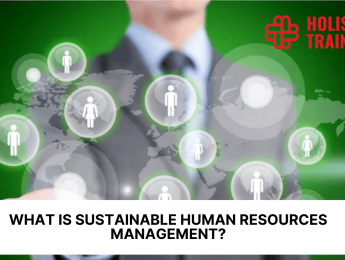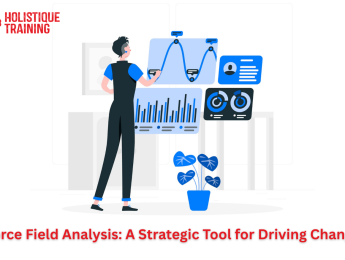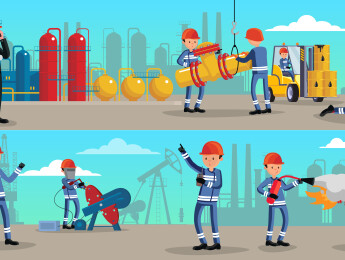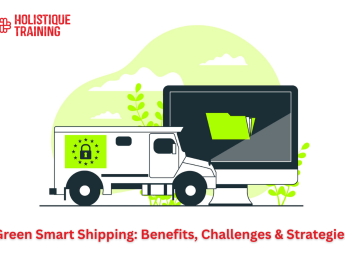- Table of Contents
- Introduction
- What is a Leadership Pipeline?
- Essential Elements of the Leadership Pipeline
- 1- Individual Contributors
- 2- Managers
- 3- Mid-Level Management
- 4- Executives
- Enhancing Each Element of the Pipeline
- The Importance of Developing Your Leadership Pipeline
- Clarity on Leadership Development
- Succession Planning
- Business Expansion
- Improves Organisation’s Financial Performance
- Room for Developing New Leadership Styles
- Employee Retention and Engagement
- Enhanced Organisational Culture
- Strategic Agility
- How to Develop Your Leadership Pipeline
- 1- Identify High-Potential Employees (HiPos)
- 2- Create More Room for Growth
- 3- Rotate Employees
- 4- Promote Inclusivity
- 5- Implement Succession Planning
- 6- Invest in Professional Development
- 7- Identify Linchpin Positions
- 8- Foster a Culture of Continuous Feedback
- 9- Encourage Leadership at All Levels
- How to Test and Evaluate Your Leadership Pipeline
- Assess Leadership Readiness
- Monitor Career Progression
- Table: Metrics to measure the effectiveness of your leadership pipeline
- Measure Leadership Impact
- Analyse Development Program Effectiveness
- Conduct Leadership Talent Reviews
- Evaluate Inclusivity and Diversity
- Gather Employee Feedback
- Implement Continuous Improvement
- Conclusion
Introduction
Developing a strong leadership pipeline is pivotal for any organisation that seeks sustained success and growth. A well-structured leadership pipeline ensures that an organisation is not only prepared for the future but also thrives in the present by harnessing the potential of its workforce. This article will explore the concept of a leadership pipeline, its essential elements, the importance of developing one, and the steps to create and evaluate it effectively.
What is a Leadership Pipeline?
A leadership pipeline is a strategic framework that organisations use to identify, develop, and prepare employees for leadership roles. It ensures a continuous supply of capable leaders who can step into critical positions as they become available. This concept goes beyond mere succession planning; it involves a systematic approach to grooming talent at all levels of the organisation, ensuring that leadership is cultivated from within.
Essential Elements of the Leadership Pipeline
A robust leadership pipeline consists of several key elements that span various levels of the organisation. Each level represents a stage in the development of leadership skills and responsibilities. Understanding and nurturing these elements ensures that the organisation develops leaders who are prepared to take on greater responsibilities.
1- Individual Contributors
Individual contributors form the foundation of the leadership pipeline. These employees excel in their specific roles and demonstrate potential for growth in leadership positions. They are often the subject matter experts in their fields, possessing deep technical knowledge and skills. However, identifying leadership potential at this stage involves looking beyond technical prowess. Key traits to look for include:
- Initiative: Individual contributors who proactively seek solutions and improvements indicate a readiness for leadership.
- Collaboration: Those who work well with others, support team goals, and facilitate group success show the ability to lead.
- Problem-Solving: Employees who approach problems with a strategic mindset and innovative solutions have the critical thinking necessary for leadership roles.
Organisations can nurture individual contributors by providing mentorship opportunities, encouraging continuous learning, and offering challenging projects that push them out of their comfort zones.
2- Managers
Managers are the first tier of formal leadership within the organisation. They are responsible for overseeing teams, managing resources, and ensuring that operational goals are met. Effective managers drive performance and act as coaches and mentors to their team members. Key responsibilities and traits at this level include:
- Team Management: Managers must be adept at managing diverse teams, including setting goals, providing feedback, and resolving conflicts.
- Resource Allocation: Efficiently managing resources, including time, budget, and personnel, is crucial for operational success.
- Development of Team Members: Managers should focus on identifying their team member's strengths and weaknesses and providing opportunities for growth and development.
- Communication Skills: Clear, concise, andeffective communication is essential for managers to convey goals, expectations, and feedback.
To support managers, organisations can offer leadership development programs, peer support groups, and opportunities for upward feedback to refine their leadership skills.
3- Mid-Level Management
Mid-level management acts as a bridge between frontline managers and executive leaders. These individuals are responsible for executing strategic plans and meeting organisational goals. They play a crucial role in translating high-level strategies into actionable plans and fostering a culture of leadership development within their teams. Key aspects of this level include:
- Strategic Execution: Mid-level managers must understand the organisation’s strategic objectives and ensure their teams are aligned with these goals.
- Leadership Development: They are pivotal in identifying and nurturing potential team leaders, creating a sustainable pipeline.
- Cross-Functional Collaboration: Mid-level managers often work across various departments, requiring strong collaboration and coordination skills.
- Change Management: They must be capable of managing change effectively, helping their teams adapt to new processes, technologies, and organisational shifts.
Organisations can support mid-level managers through advanced leadership training, executive coaching, and opportunities to participate in strategic planning sessions.
4- Executives
Executive leaders are at the top of the leadership pipeline. They set the organisation's strategic direction and make high-stakes decisions that impact the entire enterprise. Developing a strong executive leadership team is critical for long-term success, as these leaders shape the vision and culture of the organisation. Key responsibilities and traits at this level include:
- Visionary Leadership: Executive leaders must have a clear vision for the organisation's future and the ability to inspire others to follow that vision.
- Strategic Decision-Making: They must make informed decisions that steer the organisation towards its goals while managing risks and uncertainties.
- Organisational Culture: Executives play a significant role in defining and maintaining the organisational culture, ensuring it aligns with the company’s values and mission.
- Stakeholder Management: This involves managing relationships with key stakeholders, including board members, investors, and key partners.
To develop executive leaders, organisations should focus on succession planning, providing opportunities for broad organisational exposure, and offering mentorship from current executives.
Enhancing Each Element of the Pipeline
A successful leadership pipeline requires continuous attention and enhancement at every level. Organisations should regularly review and update their leadership development programs to ensure they are aligned with current and future needs. This includes:
- Regular Assessments: Conducting regular assessments to identify leadership gaps and potential candidates for development.
- Tailored Development Plans: Creating individualised development plans that address each potential leader's unique strengths and weaknesses.
- Feedback Mechanisms: Implementing robust feedback mechanisms to allow for continuous improvement and development.
Organisations can build a strong leadership pipeline that supports sustainable growth and success by focusing on these essential elements and continuously enhancing them.
The Importance of Developing Your Leadership Pipeline
Creating and maintaining a strong leadership pipeline is crucial for any organisation that aims for longevity and success. A well-structured pipeline ensures a steady flow of capable leaders and drives overall organisational performance and resilience. Here are several reasons why developing a leadership pipeline is of paramount importance:
Clarity on Leadership Development
A well-defined leadership pipeline clarifies how leaders are developed within the organisation. It outlines the competencies, experiences, and milestones required at each stage of the leadership journey, creating a transparent path for aspiring leaders. This clarity offers several benefits:
- Employee Motivation: When employees understand the pathway to leadership, they are more motivated to pursue development opportunities and strive for career advancement.
- Organisational Alignment: Clear leadership development processes ensure that leadership growth is aligned with the organisation's strategic goals and values.
- Consistent Development: With a clear pipeline, organisations can ensure a consistent approach to leadership development across all departments and levels.
Succession Planning
A leadership pipeline is integral to effective succession planning, ensuring that there is a ready pool of candidates for key positions. This proactive approach reduces the risks associated with sudden leadership vacancies and ensures continuity in leadership. The benefits include:
- Reduced Disruptions: With a succession plan in place, the organisation can quickly fill leadership gaps, minimising disruptions to operations.
- Seamless Transitions: Prepared successors can confidently step into roles, ensuring smooth transitions and maintaining organisational stability.
- Long-Term Planning: Succession planning allows organisations to plan for the long term, ensuring that future leaders are developed in line with strategic objectives.
Business Expansion
As organisations grow, the need for capable leaders at various levels becomes more pronounced. A leadership pipeline supports business expansion by ensuring skilled leaders are ready to take on new challenges and drive growth initiatives. This is particularly important in the following ways:
- Scalable Growth: Having a pipeline of prepared leaders enables the organisation to scale operations effectively without being constrained by a lack of leadership.
- Market Adaptation: Capable leaders can help the organisation adapt to new markets, trends, and competitive environments, driving innovation and expansion.
- Strategic Execution: As the organisation expands, strategic initiatives require strong leadership to be executed effectively. A robust pipeline ensures that there are leaders ready to spearhead these initiatives.
Improves Organisation’s Financial Performance
Studies have consistently shown that organisations with strong leadership pipelines tend to perform better financially. Effective leaders drive productivity, innovation, and employee engagement, all contributing to improved financial outcomes. The key financial benefits include:
- Increased Efficiency: Competent leaders optimise processes, reduce waste, and improve operational efficiency, leading to cost savings and higher profitability.
- Enhanced Employee Performance: Well-developed and supported leaders are better equipped to inspire and manage their teams, resulting in higher employee performance and productivity.
- Strategic Investments: Leaders who understand the organisation's financial goals and strategies can make informed decisions that drive sustainable financial growth.
Room for Developing New Leadership Styles
A leadership pipeline allows one to develop and experiment with new leadership styles. As the business environment evolves, organisations need leaders who can adapt and bring fresh perspectives to the table. This flexibility offers several advantages:
- Innovation: Encouraging diverse leadership styles fosters innovation and creativity, as different perspectives can lead to unique solutions and approaches.
- Adaptability: Leaders who are exposed to various styles and approaches are more adaptable and resilient in the face of change.
- Cultural Fit: Developing new leadership styles allows organisations to align leadership practices with evolving organisational cultures and values.
Employee Retention and Engagement
Investing in a leadership pipeline demonstrates a commitment to employee development, which can significantly boost retention and engagement. Employees are more likely to stay with an organisation that provides clear career advancement opportunities and invests in their growth. The benefits include:
- Higher Retention Rates: Employees who see a clear path for advancement are less likely to leave for other opportunities, reducing turnover costs.
- Increased Engagement: Development opportunities and career growth prospects enhance employee engagement, leading to higher job satisfaction and performance.
- Attracting Talent: A strong leadership pipeline can be a powerful tool for attracting top talent, as prospective employees seek organisations that invest in their future.
Enhanced Organisational Culture
A leadership pipeline contributes to developing a positive and dynamic organisational culture. Organisations foster a culture of continuous improvement, collaboration, and excellence by prioritising leadership development. The impact on organisational culture includes:
- Leadership Accountability: A pipeline that emphasises development and growth holds leaders accountable for their performance and progress.
- Collaboration and Mentorship: Developing leaders often involves mentorship and collaboration, strengthening relationships and knowledge sharing within the organisation.
- Commitment to Excellence: A focus on leadership development signals a commitment to excellence and continuous improvement, encouraging all employees to strive for their best.
Strategic Agility
Organisations with a strong leadership pipeline are more agile and responsive to changes in the market and industry. Prepared leaders can quickly adapt to new challenges, pivot strategies, and seize opportunities, ensuring the organisation's resilience and competitiveness. This strategic agility includes:
- Rapid Response: Capable leaders can respond quickly to market shifts, regulatory changes, and competitive pressures, maintaining the organisation's agility.
- Proactive Innovation: Continuously developed leaders are more likely to drive proactive innovation, keeping the organisation ahead of the curve.
- Sustainable Growth: By developing leaders who can navigate change effectively, organisations ensure sustainable growth and long-term success.
In short, the importance of developing a leadership pipeline cannot be overstated. A strategic imperative drives organisational success, financial performance, and long-term sustainability. By providing clarity on leadership development, ensuring effective succession planning, supporting business expansion, and fostering a culture of continuous improvement, organisations can build a robust leadership pipeline that meets both current and future needs. Investing in leadership development is not just about preparing for the future; it is about creating an environment where leaders thrive, employees are engaged, and the organisation is poised for sustained success.
How to Develop Your Leadership Pipeline
Developing a strong leadership pipeline requires a strategic approach integrating talent identification, growth opportunities, and continuous evaluation. Here are detailed steps and strategies for effectively building and nurturing your leadership pipeline.
1- Identify High-Potential Employees (HiPos)
The first step in developing a leadership pipeline is to identify employees with high potential (HiPos) for leadership roles. These individuals demonstrate a combination of performance, potential, and readiness for more significant responsibilities. To identify HiPos, consider the following:
- Performance Metrics: Review performance appraisals, project outcomes, and supervisor feedback to identify consistently high performers.
- Leadership Traits: Look for traits such as initiative, problem-solving abilities, emotional intelligence, and the ability to inspire and influence others.
- Growth Mindset: Identify individuals who are eager to learn, take on new challenges, and seek feedback for continuous improvement.
- Peer Recognition: Consider feedback from colleagues who recognize the individual’s leadership potential and collaborative skills.
2- Create More Room for Growth
Providing opportunities for growth and development is crucial for nurturing potential leaders. This involves creating a supportive environment where employees can expand their skills and experiences. According to Forbes, over 75% of Gen Z workers feel they should be promoted within their first year of employment. This is why companies should always create room for growth for their employees to be able to identify HiPos and eventually promote them. Strategies include:
- Challenging Assignments: Assign projects that push employees out of their comfort zones, encouraging them to develop new skills and competencies.
- Job Rotation: Rotate employees through different roles and departments to provide a broader perspective of the organisation and diverse experiences.
- Stretch Goals: Set ambitious but achievable goals that require employees to develop new strategies and demonstrate their leadership capabilities.
3- Rotate Employees
Job rotation is a powerful tool for developing a versatile leadership pipeline. It helps employees gain a holistic understanding of the organisation and prepares them for leadership roles by exposing them to various functions and challenges. Benefits of job rotation include:
- Skill Diversification: Employees develop a diverse skill set, making them more adaptable and well-rounded leaders.
- Organisational Insight: Rotations provide insights into different parts of the organisation, enhancing strategic thinking and decision-making abilities.
- Cross-functional collaboration: Employees build relationships across departments, fostering collaboration and a unified approach to achieving organisational goals.
4- Promote Inclusivity
An inclusive leadership pipeline ensures that diverse perspectives are represented at all levels of leadership. Promoting inclusivity involves creating equal opportunities for all employees, regardless of their background. Strategies to promote inclusivity include:
- Diverse Talent Pools: Actively seek and nurture talent from diverse backgrounds, including underrepresented groups.
- Inclusive Leadership Programs: Develop leadership programs that address the unique challenges faced by diverse employees and provide tailored support.
- Mentorship and Sponsorship: Encourage senior leaders to mentor and sponsor diverse talent, providing guidance and opportunities for advancement.
5- Implement Succession Planning
Succession planning is a critical component of a leadership pipeline, ensuring the organisation is prepared for future leadership transitions. Effective succession planning involves:
- Identifying Key Positions: Determine which positions are critical to the organisation’s success and require succession planning.
- Developing Successors: Identify and develop potential successors for these key positions, providing them with the necessary training and experience.
- Succession Planning Tools: Use tools such as talent assessments, development plans, andsuccession planning software to track the progress and readiness of potential leaders.
6- Invest in Professional Development
Continuous professional development is essential for preparing employees for leadership roles. Organisations should offer a range of development opportunities to enhance leadership skills and competencies. Strategies include:
- Leadership Training Programs: Develop and offer comprehensive leadership training programs that cover essential skills such as strategic thinking, communication, and team management.
- Workshops and Seminars: Provide access to workshops, seminars, and conferences that focus on leadership development and industry trends.
- Advanced Education: Encourage employees to pursue advanced degrees or certifications that align with their career goals and the organisation’s needs.
7- Identify Linchpin Positions
Linchpin positions are roles that are crucial to the organisation’s success and require specific skills and knowledge. Identifying and developing talent for these positions ensures the organisation remains resilient and competitive. Steps to identify and develop linchpin positions include:
- Critical Role Analysis: Analyse which roles have the most significant impact on the organisation’s operations and strategic goals.
- Targeted Development: Focus development efforts on individuals in these roles, providing specialised training and experiences to prepare them for future leadership.
- Knowledge Transfer: Implement knowledge transfer programs to ensure that critical knowledge and skills are passed on to potential successors.
8- Foster a Culture of Continuous Feedback
Feedback is a vital component of leadership development, providing insights into strengths and areas for improvement. Organisations should foster a culture of continuous feedback to support leadership growth. Strategies include:
- Regular Performance Reviews: Conduct regular performance reviews that provide constructive feedback and set development goals.
- 360-Degree Feedback: Implement 360-degree feedback processes that gather input from peers, subordinates, and supervisors to provide a comprehensive view of performance.
- Real-Time Feedback: Encourage managers and colleagues to provide real-time feedback, allowing employees to make immediate adjustments and improvements.
9- Encourage Leadership at All Levels
Developing a leadership pipeline involves fostering leadership qualities at all levels of the organisation, not just in formal leadership positions. This approach creates a culture of leadership where everyone feels empowered to contribute. Strategies include:
- Leadership Opportunities: Provide opportunities for employees to take on leadership roles in projects, committees, and initiatives.
- Empowerment and Autonomy: Empower employees to make decisions and take ownership of their work, fostering a sense of responsibility and leadership.
- Recognition and Reward: Recognise and reward leadership behaviours, reinforcing the importance of leadership development throughout the organisation.
In summary, developing a strong leadership pipeline is a multifaceted process that requires strategic planning, continuous investment, and a commitment to fostering talent at all levels. Organisations can build a resilient and adaptable leadership pipeline by identifying high-potential employees, creating growth opportunities, promoting inclusivity, and implementing succession planning. Investing in professional development, fostering a culture of continuous feedback, and encouraging leadership at all levels ensures that the organisation is prepared for future challenges and poised for long-term success.
How to Test and Evaluate Your Leadership Pipeline
Testing and evaluating your leadership pipeline is crucial to ensure that it effectively identifies, develops, and promotes the right individuals for leadership roles. According toThomas, only around 20-30% of organisations opt to fill senior executive and managerial positions through internal promotions. A robust evaluation process helps organisations refine their leadership development strategies, address gaps, and continuously supply capable leaders. Here are steps and methods to effectively test and evaluate your leadership pipeline:
Assess Leadership Readiness
Evaluating the readiness of potential leaders is essential to determine if they are prepared to take on leadership roles. Consider the following methods:
- Performance Reviews: Regular performance reviews provide insights into an individual's achievements, strengths, and areas for improvement. Use these reviews to assess their readiness for leadership roles.
- Leadership Assessments: Utilise leadership assessment tools and simulations that measure competencies such as strategic thinking, decision-making, and emotional intelligence.
- 360-Degree Feedback: Gather feedback from peers, subordinates, and supervisors to comprehensively view the individual's leadership capabilities and readiness.
Monitor Career Progression
Tracking the career progression of individuals in the leadership pipeline helps in evaluating the effectiveness of development programs and readiness for higher roles. Steps to monitor career progression include:
- Development Plans: Review individual development plans regularly to ensure they are on track and achieving their goals.
- Milestone Achievements: Track the completion of key milestones and development activities critical for leadership readiness.
- Role Transitions: Monitor the ease and success of transitions into new roles, identifying any challenges or support needed.the
Metric | Description |
Leadership Readiness | Assess potential leaders' preparedness |
Career Progression | Track advancements and role transitions |
Team Performance | Measure the the effectiveness of team leadership |
Employee Engagement | Gauge satisfaction within teams |
Business Outcomes | Evaluate the impact on productivity and results |
Table: Metrics to measure the effectiveness of your leadership pipeline
Measure Leadership Impact
Evaluating the impact of current and potential leaders on the organisation provides valuable insights into the effectiveness of the leadership pipeline. Consider the following metrics:
- Team Performance: Assess teams' performance led by individuals in the leadership pipeline. High-performing teams often indicate effective leadership.
- Employee Engagement: Measure employee engagement and satisfaction levels within teams, as effective leaders typically foster a positive and engaging work environment.
- Business Outcomes: Evaluate business outcomes such as productivity, innovation, and financial performance in areas influenced by potential leaders.
Analyse Development Program Effectiveness
Evaluating the effectiveness of leadership development programs helps refine and enhance these programs to prepare future leaders better. Methods to analyse program effectiveness include:
- Program Feedback: Collect feedback from participants on development programs' relevance, quality, and impact.
- Skill Improvement: Assess the improvement in leadership skills and competencies as a result of the development programs.
- Longitudinal Studies: Conduct longitudinal studies to track the long-term impact of development programs on career progression and leadership effectiveness.
Conduct Leadership Talent Reviews
Regular leadership talent reviews help evaluate the leadership pipeline's overall health and effectiveness. Steps to conduct effective talent reviews include:
- Calibration Sessions: Hold calibration sessions where senior leaders discuss and evaluate the potential and readiness of individuals in the pipeline.
- Talent Review Meetings: Conduct regular talent review meetings to assess the progress and development of potential leaders.
- Succession Planning Updates: Update succession plans based on the outcomes of talent reviews, ensuring that high-potential individuals are on track for future leadership roles.
Evaluate Inclusivity and Diversity
Ensuring that the leadership pipeline is inclusive and diverse is critical for fostering innovation and reflecting the organisation’s values. Steps to evaluate inclusivity and diversity include:
- Diversity Metrics: Track metrics such as gender, ethnicity, and other diversity indicators within the leadership pipeline.
- Inclusive Practices: Assess the inclusivity of leadership development programs and initiatives to ensure they are accessible and supportive for all employees.
- Representation Analysis: Analyse the representation of diverse groups at various stages of the leadership pipeline and address any disparities.
Gather Employee Feedback
Employee feedback provides valuable insights into the perceived effectiveness and fairness of the leadership pipeline. Methods to gather feedback include:
- Surveys and Questionnaires: Conduct surveys and questionnaires to gather feedback on leadership development opportunities, career progression, and support.
- Focus Groups: Hold focus groups with employees at different levels to discuss their experiences and perceptions of the leadership pipeline.
- Exit Interviews: Use exit interviews to gather feedback from departing employees on their experiences with leadership development and opportunities within the organisation.
Implement Continuous Improvement
Continuous improvement is key to maintaining an effective leadership pipeline. Steps to implement continuous improvement include:
- Regular Reviews: Schedule regular reviews of the leadership pipeline processes and outcomes to identify areas for improvement.
- Benchmarking: Benchmark your leadership development practices against industry standards and best practices to identify gaps and opportunities.
- Feedback Loops: Establish feedback loops where evaluation insights are used to refine and enhance leadership development strategies and programs.
In short, testing and evaluating your leadership pipeline is essential for ensuring that your organisation has capable and prepared leaders. Organisations can build a resilient and effective leadership pipeline by assessing leadership readiness, monitoring career progression, measuring leadership impact, analysing development program effectiveness, conducting talent reviews, evaluating inclusivity and diversity, gathering employee feedback, and implementing continuous improvement. These strategies ensure that the right individuals are developed and promoted and contribute to the organisation's overall success and sustainability.
Conclusion
Developing a strong leadership pipeline is essential for any organisation's long-term success. By understanding the key elements of a leadership pipeline, recognizing the importance of its development, and implementing strategic steps to build and evaluate it, organisations can ensure that they are prepared for future challenges and opportunities. A well-structured leadership pipeline secures the organisation's future and fosters a culture of continuous growth and development, ultimately driving the organisation towards sustained success.
Investing in a comprehensive approach to succession management is critical. Our course, "Succession Management—A Business Necessity," offers in-depth strategies and practical tools to help you build an effective leadership pipeline. Enroll today to ensure your organisation is well-equipped with future-ready leaders.

























